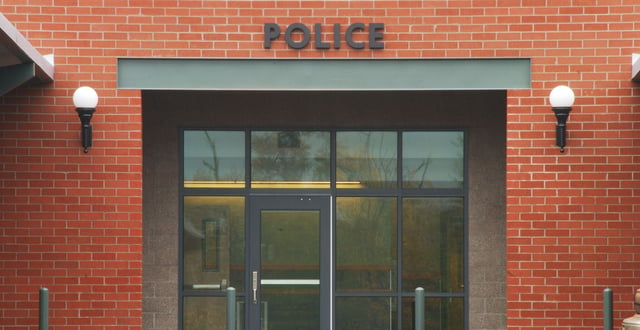
To address today's threats, law enforcement organizations are turning to audio. And for good reason: Relying on video surveillance alone is akin to watching a silent movie -- great for throwback movie nights, bad for security.
By adding audio, organizations greatly expand their ability to monitor premises. Microphones pick up addition information about incidents that otherwise wouldn't be possible. Breaking glass, verbal aggression, and suspicious noises are all captured with audio.
Likewise, audio also aids in the collection of evidence. Slumped over suspects rarely articulate their confession at audible levels. Microphones solve this problem by utilizing highly sensitive sensors to capture audio of all levels while still focusing on speech intelligibility.
With this in mind, let's take a look at where most organizations are deploying audio to better secure and protect their facilities.
1. Booking Areas
Booking areas are a key entry-point and primary point of contact between staff and detainees. Monitoring conversations in this area is necessary to provide better situational awareness for staff and provides an additional layer of accountability.
Mounting an external microphone above the booking area is widely considered a best practice. External microphones typically come in vandal-resistant housing and are placed away from air vents and other sources of background noise to preserve audio clarity.
2. Interview Rooms
Interview rooms produce court-admissible evidence. For this reason, audio recordings derived from interviews need to be of the highest quality for prosecutors.
Facilities typically use an omnidirectional microphone paired with a base station and wall-mounted mute switch plate. This placement ensures all statements are clearly captured.
If you're worried about violating attorney-client privileges, "mute" features can be implemented which allow one to remotely toggle the mic on or off.
3. Holding Cells
Holding cells are notorious for physical and verbal confrontations between suspects. For holding cells housing multiple suspects, mount a vandal-resistant microphone in the corner of the room. This enables staff to remotely monitor each cell at all times.
If emotions run high or occupants become rowdy, staff can quickly respond and de-escalate disputes.
Bringing it Home
In today's world, video alone doesn't cut it. Law enforcement professionals are increasingly turning to audio to better protect suspects, staff, and to provide greater situational awareness.
Audio allows staff to monitor multiple areas at once for potential incidents, produce more substantial court evidence, and improve overall facility security.
For law enforcement professionals interested in learning more about the power of audio, feel free to request a free consultation using the Want to Hear More form.


